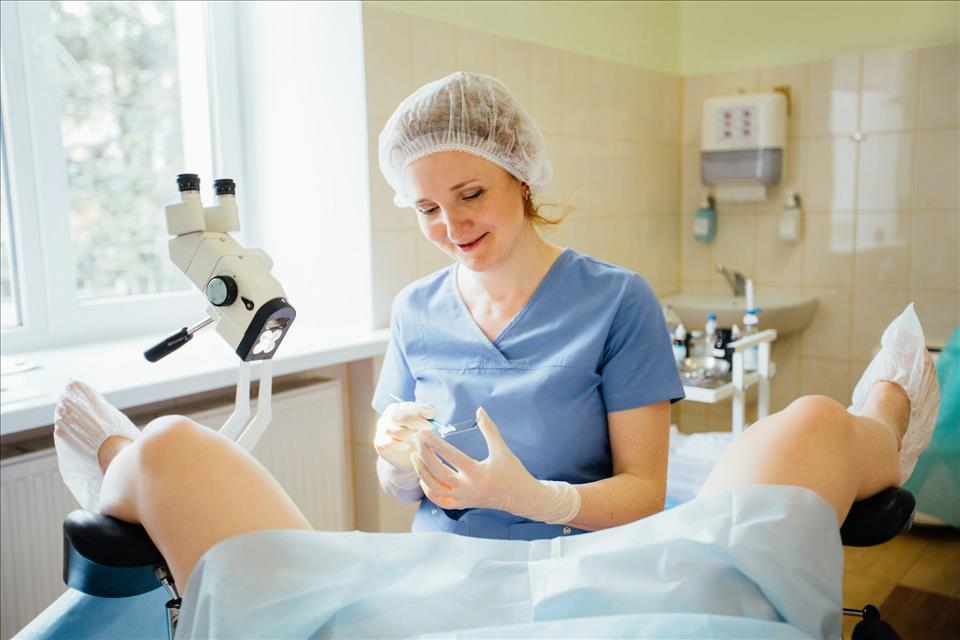NHS To Offer At-Home Cervical Cancer Screening An Expert Explains What You Need To Know
Since December 2019, England has adopted a more accurate screening method that tests first for high-risk human papillomavirus (HPV), the virus responsible for nearly all cervical cancers, rather than looking immediately for abnormal cervical cells. Recommended by the UK National Screening Committee, this approach allows for longer intervals between tests for those who receive a negative HPV result, typically every five years instead of every three.
From July 1 2025 , this updated screening schedule will apply to women aged 25 to 49 who test negative for high-risk HPV. Research shows that those who test negative are at very low risk of developing cervical cancer in the following decade.
Since the announcement, some women have raised concerns online, often shaped by personal experience. One woman posted on Facebook:
Others have echoed these fears, calling not only for shorter screening intervals but for earlier testing ages. With around 3,200 people diagnosed with cervical cancer in the UK each year, some wonder whether the change is rooted in science - or in cost-cutting.
What is cervical screening?Cervical screening , previously called a smear test, is a simple, routine way to help prevent cervical cancer. It's offered to women, some trans men and non-binary people with a cervix. The test checks the cervix (the opening to the womb) for early signs of change that could lead to cancer if left untreated.
It's not a test for cancer itself. Instead, it looks for HPV , a common virus that can cause abnormal cell changes. If high-risk HPV is found, the sample is then checked for abnormal cells, which can be treated before they develop into cancer. If no HPV is detected, the risk is extremely low.
Why is the screening interval changing?Under the new system, those who test negative for high-risk HPV will be screened every five years, rather than every three. This brings younger people in line with those aged 50 to 64, who already follow a five-year schedule.
Anyone who tests positive for HPV will continue to receive annual follow-ups.
This shift is supported by strong scientific evidence . HPV screening is more accurate than the previous method, which only looked for abnormal cells. Studies show that people who test negative for high-risk HPV are at very low risk of cervical cancer for many years - making five-year intervals safe and effective.
The HPV vaccineThe introduction of the HPV vaccine in the UK has significantly reduced HPV infections, the leading cause of cervical cancer. Research shows the vaccine can prevent up to 90% of cases, and the latest version, introduced in 2021 , provides even broader protection.
Combined with screening, the vaccine has contributed to a 25% drop in cervical cancer rates since the early 1990s.
Self-sampling kitsDespite these advances, many people still miss their screening appointments due to embarrassment, discomfort, time constraints or cultural concerns. Starting in January 2026, NHS England will offer at-home cervical screening kits to women and others with a cervix who rarely or never attend routine screening.
With more than five million women not currently up to date, the scheme aims to boost participation - especially among underscreened groups , including younger people, ethnic minorities, disabled people and LGBT+ people. Trials suggest self-sampling could raise uptake to 77% within three years, nearing the NHS target of 80%.
The kits, sent in discreet packaging with pre-paid return postage, allow people aged 25 to 64 to take a simple vaginal swab at home. The sample is tested for HPV, and if high-risk strains are found, the patient is invited for further tests.
Is the new schedule safe?For most people, yes. The longer interval means fewer appointments for those at low risk, without compromising early detection for those who need it. The test itself usually causes only mild discomfort or pressure, and light spotting can occur afterwards. If you're concerned, your doctor or nurse can help.
While some worry that five years is too long to wait, it's important to remember that HPV testing is highly accurate – and annual follow-ups remain in place for those who need closer monitoring.
Even if you're not due for screening, it's vital to know the signs of cervical cancer , including:
-
Unusual vaginal bleeding (after sex, between periods or after menopause)
Changes in vaginal discharge Pain during sex
Pain in the lower back or pelvis
If you experience any of these symptoms, don't wait for your next screening – contact your GP straight away.
Cervical screening saves lives. The shift to five-year intervals is backed by science and designed to keep people safe while reducing unnecessary appointments. If you're invited, go – even if you feel fine. And if something doesn't feel right, speak up.
The aim is simple: catch problems early, prevent cancer, and protect lives.

Legal Disclaimer:
MENAFN provides the
information “as is” without warranty of any kind. We do not accept
any responsibility or liability for the accuracy, content, images,
videos, licenses, completeness, legality, or reliability of the information
contained in this article. If you have any complaints or copyright
issues related to this article, kindly contact the provider above.
Most popular stories
Market Research

- Betfury Is At SBC Summit Lisbon 2025: Affiliate Growth In Focus
- Xfunded Expands In Dubai, Strengthening Collaborations With Trading Influencers Across Europe
- Motif AI Enters Phase Two Of Its Growth Cycle
- Utila Triples Valuation In Six Months As Stablecoin Infrastructure Demand Triggers $22M Extension Round
- Red Lions Capital And Neovision Launch DIP.Market Following ADGM Regulatory Notification
- Origin Summit Unveils Second Wave Of Global Icons Ahead Of Debut During KBW





















Comments
No comment